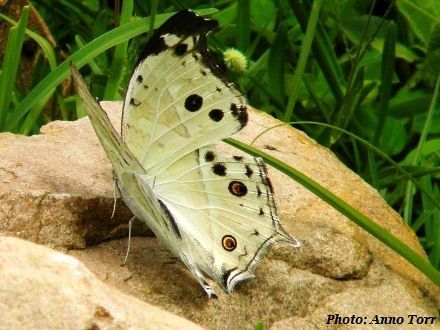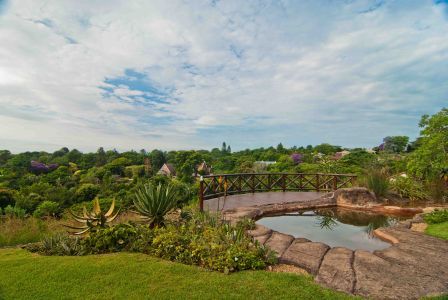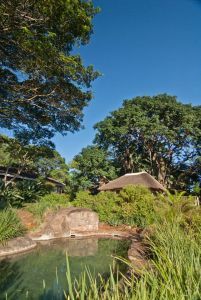Welcome to our new website. You’re viewing a page that has not yet been optimised for mobile viewing. You may wish to view it on a desktop or tablet if not already doing so. We appreciate your patience while we make the upgrade.
Weathered Rock Features in Gardens
The removal of rocks from their natural sites is illegal without a mining permit and is severely detrimental to biodiversity as rocks often provide micro climates for specialised plants and also protection from grazing. The removal of rocks also destroys the habitat of wildlife, particularly the smaller species.
 Butterflies such as this Mother-of-Pearl (Protogoniomorpha parhassus) only fly when warm and often rest on rocks, using the heat radiating from the rock to warm themselves. |
We have and will continue to actively promote indigenous gardening and many of the gardens in our annual Indigenous Open Gardens shows have included weathered rock features. Whilst the event has not actively promoted rock features per se we have to accept that an unintended consequence may well have been the popularisation of these features and this would in turn have encouraged the industry that sources these rocks.
We have been aware of the problem regarding the unethical removal of weathered rocks, large trees and aloes from natural habitats and we have in some cases avoided certain gardens and landscapers for this reason. We will in future need to be even more selective in choosing gardens so as not to promote the plundering of our natural habitats. Where gardens have existing weathered rock features we will need to explain the sources or at least acknowledge a de facto situation and actively highlight the negative consequences.
As mentioned above, the law prohibits the removal of “minerals” (the definition of “minerals” includes rocks) from the natural environment without a mining permit but there are many grey areas and there are also legitimate sources so it is an area that is almost impossible to police and control through official channels. The issue then becomes one of ethics and environmental consciousness. Whilst weathered rocks may enhance the appearance of a garden they are by no means essential to achieve an excellent indigenous garden. We would also recommend that gardeners consider alternatives such as “simulated rocks” made form fibreglass or concrete.
 |
 |
| Weathered rocks at these two pools are “simulated rocks” made from alternative materials and are visually pleasing | |
We would urge anyone that insists on purchasing weathered rocks to meticulously verify the source of the rocks and not to purchase them if there is any doubt as to the legitimacy of the source. We all want to believe that the person we are dealing with is ethical but please do not blindly accept verbal assurances from a supplier/nursery/landscaper.
